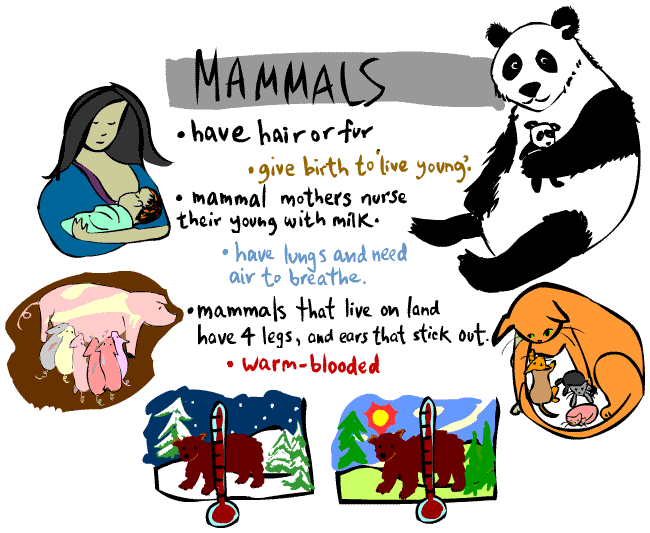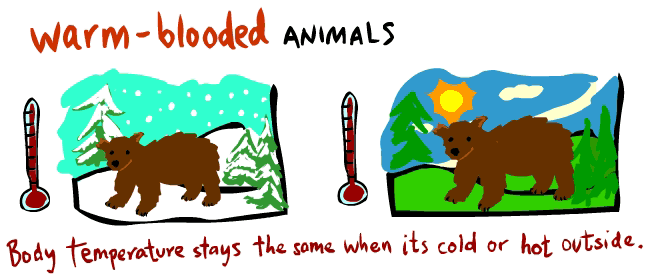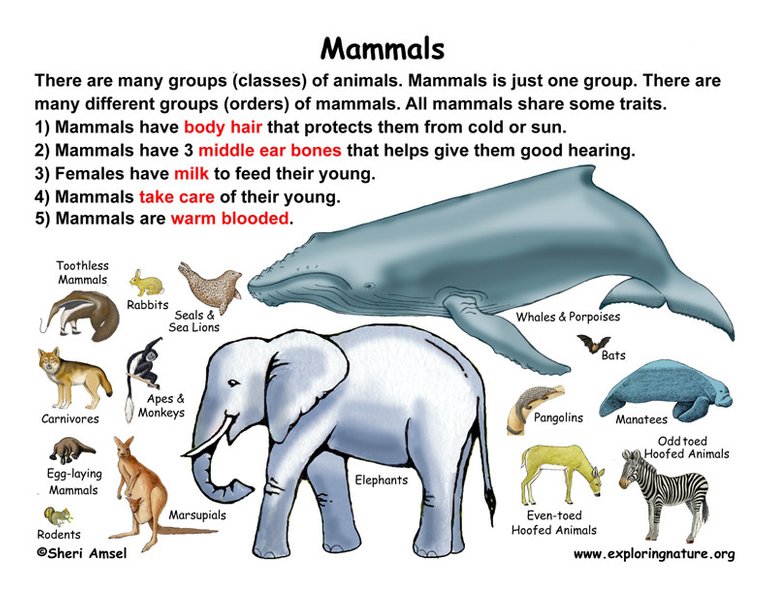Very recently, my seven year old son came to me and asked "Dad, what is a mammal?" At school they started to talk about different kinds of animals and his teacher gave them the word "mammal" to study up about. They were supposed to explain what it was and give all the information they possibly could about mammals.
Of course, whenever he comes home with questions like these, my wife and I try to find easy, age related content to explain the concept to him. It's not about making it easy but rather about finding a way to explain it to him to cause the least possible confusion. He sucks information up like a sponge, so it has to be taught correctly the first time.
A mammal is...
There are two kinds of animal that scientists describe as warm-blooded: birds and mammals. The rest of the creatures in the animal kingdom are said to be cold-blooded.

Warm-blooded animals and cold-blooded animals:
These terms are really misleading, aren't they?
In a cold-blooded animal the temperature of its body changes as the temperature of the surrounding air changes. In a warm-blooded animal the temperature of the body remains more or less the same, unless the animal is ill or hibernating.
A warm-blooded animal keeps warm because of its coat of hair or fur (or feathers, in the case of birds). In cold weather, or when there is a sudden drop in the temperature of it's surroundings, it raises its own temperature by shivering. If the surrounding get too hot, as at midday or in the summer, it can cool itself by sweating or panting.

Image source
Dogs, cats, horses, elephants, monkeys and tigers are all examples of warm-blooded animals. Snakes, lizards, tortoises, frogs and toads area ll cold-blooded animals.

Image source
There is a special name for warm-blooded animals that are not birds. It's a mammal.
As well as being warm-blooded, mammals have a number of other tings in common. They are usually four-legged, although some, such as humans, stand on two. Usually they are covered in hair. Even whales may have a few hairs on their mouths.
Hair and Fur:
Hair plays a part in keeping a mammal's body temperature at an even level. Most of the time it lies flat on the body. In cold weather it can be raised. Just as a bird ruffles its feathers when it needs extra warmth. In both cases air is trapped among the hair or the feathers, and this acts as insulation against the cold.
The hairs grow out from what are called "follicles" in the skin. Each hair is a long filament, hollow at the center of one or more layers of horn. This horn is the same kind of material that makes up our own finger nails.
Different kids of hair have different names. When an animal's coat consists of hair that is soft and fine but short it is called fur.
When fine, soft hair is long and curly it is called wool, as in a sheep. The the whole coat is called a fleece.
Tough, stiff hairs, especially when they are long, are called bristles. In some animals the hairs are even tougher and stronger than bristles. They are then called spines.

The spiny anteater with spines

Porcupines have very long spines called quills
The oddest hair of all must belong to the rhinoceros. The horns on its face are made up of a type of matted hair!



